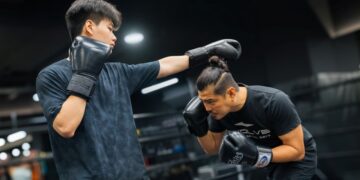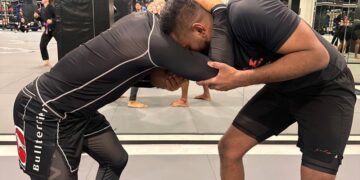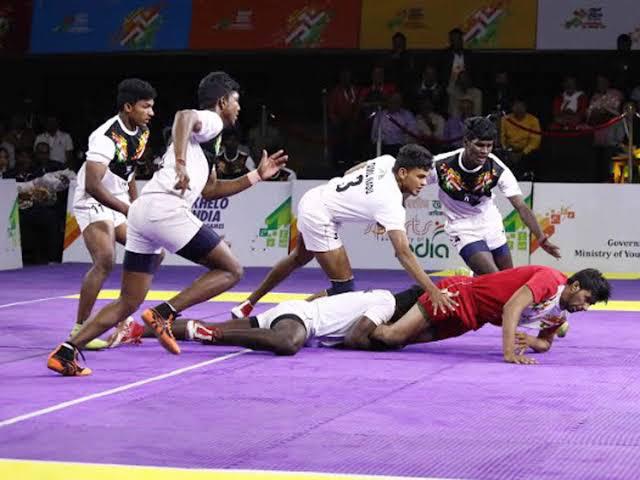Martial arts training might be what you need if you’re interested in a more exciting way to rebuild that knee, shoulder, or back.
Signing up for classes won’t automatically give you some magical ability to perform flashy techniques, but disciplines like Muay Thai, Brazilian Jiu-Jitsu, and Boxing offer many movements that translate into improved balance, flexibility, and strength as you rehabilitate your body.
Using Martial Arts Training As A Recovery Tool
Let’s explore some of the ways learning martial arts can be beneficial to people rehabilitating injuries.
1) Improves Balance
Rebuilding your balance after an injury often feels like standing in a bus darting through city traffic without holding on to anything. Training in martial arts like Muay Thai, Kickboxing, and Boxing involves using stances that teach you how to distribute your weight correctly.
Standing with your feet shoulder-width apart, one foot in front and the other behind, and your knees slightly bent while you move around a mat trains your proprioception – your sense of body position and movement. Moving while in a fighting stance also fires up your ankle and hip stabilizers, improving your overall balance.
Grappling-based martial arts like Judo teach controlled rolls and break falls that help you safely distribute impact forces when thrown to the ground. It’s a handy skill to have when your balance is still wobbly.
A 2024 study showed that martial arts like Boxing were more effective at rehabilitating stroke patients than conventional physical therapy.
2) Increases Flexibility
Injuries often leave muscles tight. Martial arts training involves lots of stretching and dynamic movements that will help loosen up your muscles, ligaments, and joints, improving your mobility.
Training also targets muscle groups in ways that conventional exercises can’t. For example, BJJ uses hip escapes that involve a movement called “shrimping,” which stretches your oblique muscles and hip flexors while improving your ability to control your core – key for rehabbing lower back injuries.
Striking styles like Boxing teach you to rotate your feet, hips, and torso when throwing strikes, loosening up stiff shoulders and spines.
Your martial arts training will give you an ideal blend of dynamic and static stretches. Studies show that combining both types of stretches improves flexibility faster than only performing static stretches.
3) Strengthens Your Body
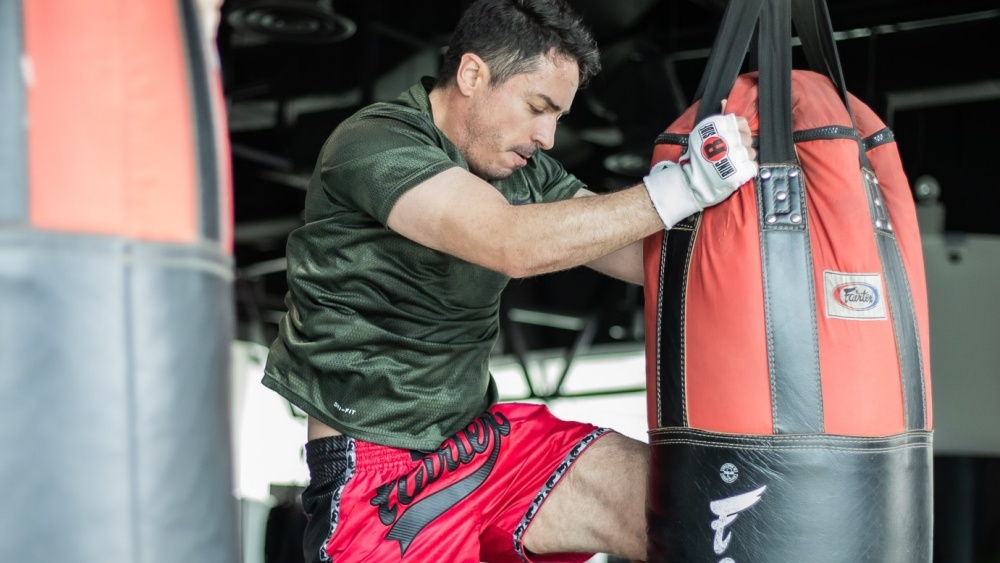
Martial arts like BJJ, Muay Thai, and Kickboxing build full-body strength through dynamic, engaging movements—no boring workouts required.
Martial arts training involves performing many functional movements without the boredom of monotonous conventional workouts.
Styles like BJJ, Muay Thai, and Kickboxing engage virtually every muscle in your body, strengthening them. You end up with stronger, more toned muscles.
4) Makes You Tougher
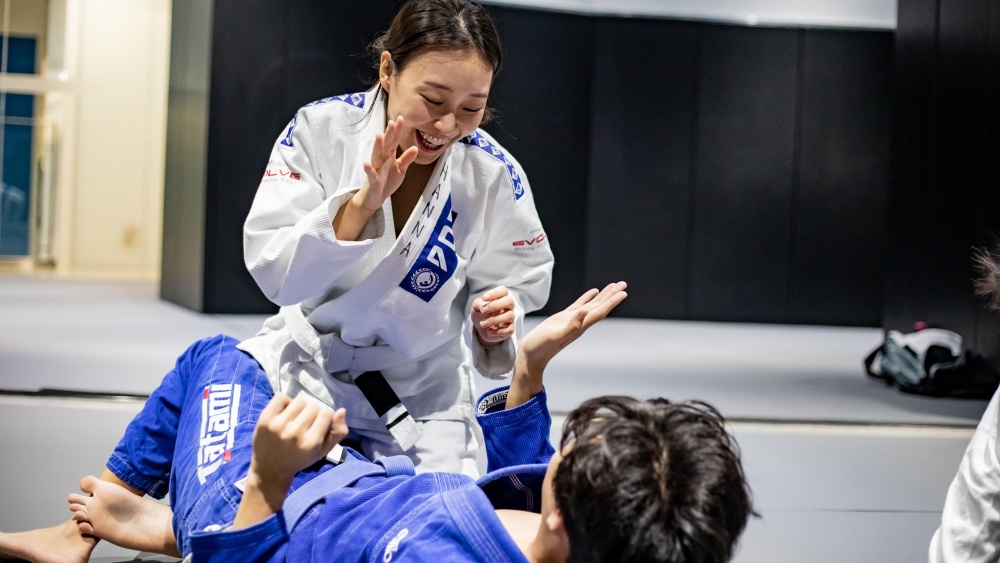
Martial arts boosts resilience, focus, and mood—helping you push through physical therapy while leaving you feeling energized, not drained.
Physical therapy can be as mentally draining as it is physically. However, martial arts training builds resilience, improves focus, and lowers stress, helping you to power through your workouts.
Instead of feeling drained after physical therapy, you’ll feel relaxed after martial arts classes, thanks to the feel-good hormones released in your brain because of all the work you put in at the dojo.
5) Gives You A Support System
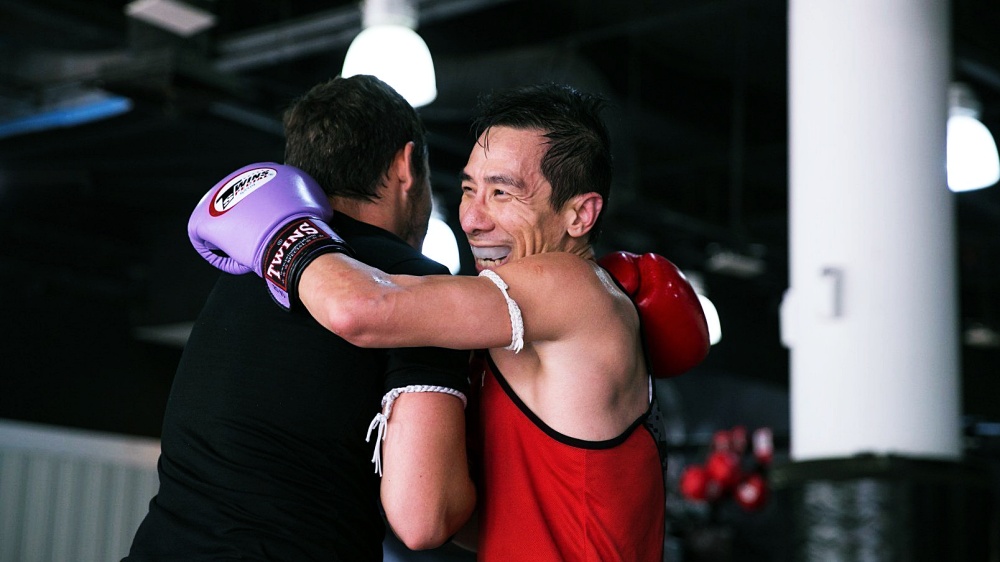
Martial arts turns rehab into a team effort, surrounding you with supportive training partners who keep you motivated and make the journey more enjoyable.
Physical therapy feels much easier when you have an entire team behind you. Martial arts training is a group activity, so you get to interact with people from all walks of life during training.
Some of your training partners will serve as the support system that’s always there to cheer you on whenever you need a mental boost. You’ll eventually find yourself looking forward to your interactions with your training partners, some of whom might become lifelong friends. Your training partners will give you extra motivation to show up for training.
6) Easier To Stick To
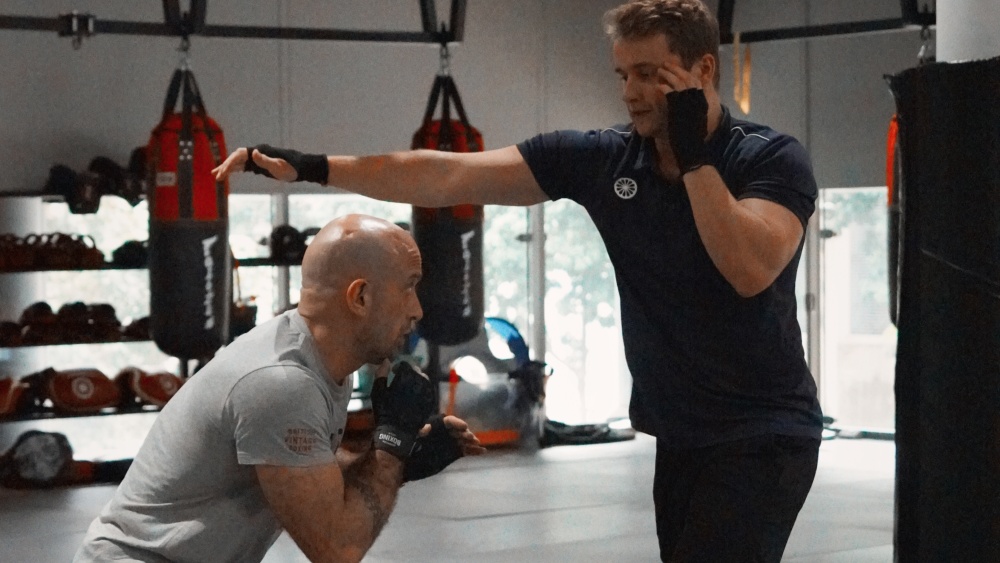
Martial arts makes recovery exciting, with ever-changing classes that keep you engaged and motivated—unlike the monotony of traditional physical therapy.
Traditional physical therapy isn’t something most people look forward to. It typically consists of conventional exercises that quickly become monotonous. Martial arts training gives you the opposite of that.
No two classes are ever the same, given the countless techniques each martial art offers. There’s no time for boredom to creep in when you’re never sure what to expect during each class.
7) Provides A Fast Feedback Loop
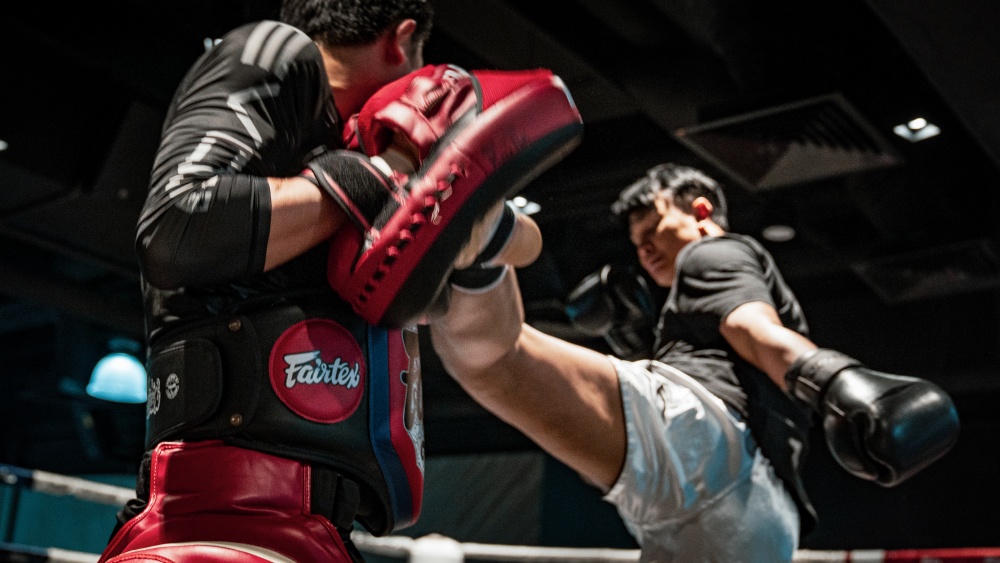
Martial arts offers fast, visible progress that keeps you motivated—turning hard work into real results and building discipline that lasts beyond the gym.
Another awesome thing about using martial arts for physical therapy is the fast feedback loop you get. You typically don’t have to train for long before you start to enjoy noticeable improvements. One week, you can barely pick up your legs off the ground to throw a roundhouse kick, and you’re firing perfect roundhouses a month later.
The fast feedback loop reminds you that all your hard work isn’t being wasted. Seeing your training results motivates you to train even harder, even when performing conventional PT exercises. You’ll become more disciplined because of your martial arts training, which will carry over into other aspects of your life.
Safety First: Don’t Go Full Ninja On Day One
Let’s go over some tips that will help you get the most out of your martial arts training while rehabbing your body:
- Work With The Pros: Talk to your personal trainer or doctor before adding martial arts to your training routine. Better yet, find a martial arts dojo with instructors who are also certified in physical therapy.
- Modify, Modify, Modify: There’s a reason you’re in physical therapy in the first place, so resist the urge to perform every exercise at full speed. Don’t give up on techniques entirely simply because you find them challenging. Instead, devise creative ways to modify them, like reducing their range of motion, swapping kicks with gentle leg lifts, or finding something to hold on to for balance when executing techniques.
- Listen To Your Body: You’re rehabbing an injury, not auditioning for the next John Wick movie, so listen to your body and pause what you’re doing if you feel pain while training.
Kickstart Your Comeback
Martial arts training is an excellent tool for rebuilding your body, and you’ll have lots of fun while training. Your training will improve your mobility, flexibility, and coordination, helping you to enjoy a high quality of life. You might even end up in better physical shape than you’ve ever been at any point in your life.
Check out one of Evolve MMA’s complimentary classes and chat with our instructors to learn more about how your training can be used as a rehabilitation tool.
Book your complimentary trial class with our World Champions below!
If you have any other questions regarding Evolve MMA and the programs we offer, you can get in touch with our membership executives at the following locations:
Evolve MMA (Far East Square)
26 China Street
Far East Square #01-01
Singapore 049568
Phone: Evolve MMA (Orchard Central)
181 Orchard Road
#06-01 Orchard Central
Singapore 238896
Phone: Evolve MMA (KINEX)
11 Tanjong Katong Road
#02-52 KINEX
Singapore 437157
Phone: Evolve MMA (Star Vista)
1 Vista Exchange Green
#02-26A The Star Vista
Singapore 138617
Phone: (65) 6539 9590
Any parent already knows that raising children can be as challenging as trying to juggle two flaming swords while blindfolded on a treadmill. Many are turning to martial arts classes to get their kids off…
A loss during competition sometimes feels like a sucker punch to your ego. One minute, you’re on top of the world and questioning every decision you made during the match—and maybe even in life—the next…
If you enjoy leisurely walks around the trendy enclave of Paya Lebar-Katong to suss out where the good food options are, then you’ve probably come across KINEX. The modern mall is about ten minutes away…
Martial arts have shaped the world’s military forces for millennia and continue to do so despite the many military technological advancements made in the past few centuries. While the days of battles taking place on…
Working out can greatly boost your mood, whether you do martial arts or another sport. But you also have to eat well to reap the benefits of exercise. Just look at what these six famous…
Westsiders in Singapore, are you looking for a gym to help you kickstart your new year’s resolutions? If you’re looking for a martial arts class at The Star Vista, the good news is that the…
In the ever-evolving world of BJJ, there has been a noticeable shift in how practitioners approach the ground game. Many practitioners now emphasize their leg lock game, which is now considered a must-learn across all…
Fear is a natural part of competition, especially in combat sports like Brazilian Jiu-Jitsu (BJJ), Muay Thai, boxing, and mixed martial arts (MMA). Whether you’re a first-time white belt entering your local tournament or a…
Mixed martial arts (MMA) is one of the fastest-growing sports today. MMA attracts a wide spectrum of athletes and viewers from all walks of life. From the likes of Mark Zuckerberg to your regular weekend…
Your isometric strength plays a role in martial arts like Brazilian Jiu-Jitsu, Wrestling, Boxing, and Muay Thai, whether you realize this or not. Anything that requires holding a position while fighting against tension and other…
Getting older doesn’t mean you have to hang up your gloves or retire your Gi in martial arts. While aging is inevitable, there are ways to keep dominating the mat, ring, and cage as your…
As children grow, developing life skills like emotional resilience is essential to help them navigate life’s challenges. While these skills can be learned through experience and guidance, activities like martial arts offer a powerful and…







